We discuss the following topics in this blog:
- Differences Between Traditional & Cloud-Native
- Significance of Service Provisioning Systems
- dSP (Digital Service Provisioning)
In addition to these topics, we shall also be answering the following FAQs:
- What is Cloud Computing?
- What is WiFi?
Contents
Introduction
“Cloud Native Service Provisioning” (CNSP) – a term of interest among Telcos who aim to build a future-ready & service-agnostic network. The speed with which Service-Provisioning product is capable of integrating with new network elements – in order to serve ever-changing business requirements – becomes a determining factor for the growth and sustainability of any Telco today.
The quicker, easier & flexible your Service-Provisioning product, the faster is the roll-out of new service. And so, the higher chances of a market win. That is why an agile, scalable & configurable Service-Provisioning product is on the wish-list of all Telcos.
Before we jump into the enormous advances that CNSP brings, let’s first discuss current service provisioning practices and their limitations.
What are the Differences Between Traditional & Cloud-Native?
In a typical Telco’s Network Setup, there are approximately 100+ different applications running – like – Inventory, CRM, Mediation, Charging. Billing, Payment, Dunning, Rating, OTT Applications, Network Monitoring, IP-Loggers, Fraud prevention, and so on…
All these applications must be running on at least DUAL-setup mode (to support Active-Active operation mode OR for disaster-recovery aspect) resulting in a huge amount of hardware (Capex) investment from day one. Traditionally Telcos had to make huge investments in procuring necessary H/W and S/W at the very beginning of their business.
Now, with the advancement of Cloud-Native Software, Services and Platforms, these Capex expenses can be reduced to a large extent.
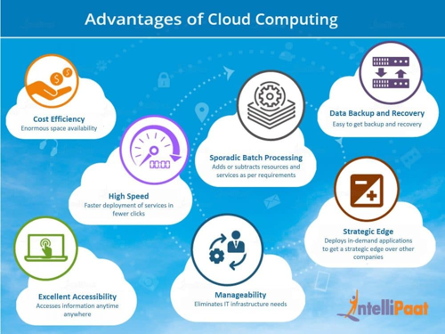
With its inherent Auto-scaling characteristic among others, the Cloud-Native Software gives Telco the much-needed agility of “pay as you grow”. NO need to buy hardware that supports 10M+ users on day one. Start with 32 Core / 128 GB RAM / 10 TB HDD that is capable of supporting 10K users.
Expand hardware horizontally and/or vertically as your business grows. God forbid if the business does not perform as your sales team predicted, shrink H/W capacity and pay less.
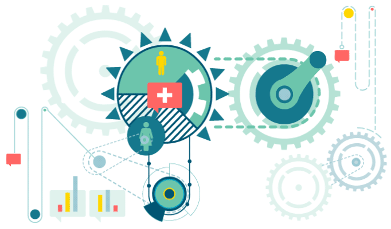
When you buy a SIM card from shop and insert it into a phone, it starts working almost instantaneously and you can make calls with your new SIM card within seconds. When you purchase a Netflix subscription, it takes only a few seconds before the actual movie starts streaming on your device.
To make it work, Telcos need to perform a set of defined tasks across its B/OSS suite of products – like Subscriber-Creation, Plan-Purchase, Subscription-Activation, Service-Association, Service-Delivery, Notification, etc. – within the scale of milliseconds and to the traffic of 100s of transactions per second.
On the other side, in the world of IoT where 26 B+ connected devices (as of Gartner report in 2019), and each requiring profile (activation/ deactivation/ update) & continuous monitoring, the performance requirement of Telco’s network has surged exponentially and will continue to burst.
In brief, to serve and survive such performance-centric market requirements, Telcos must get a robust, scalable, secure and agile Service-Provisioning system in-place.
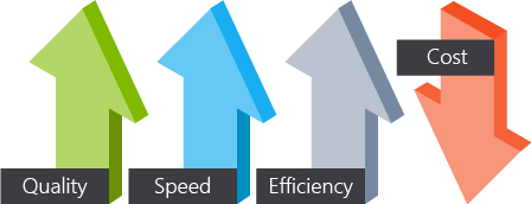
How to Leverage Service-Provisioning Systems?
In a competitive market like today, Telcos cannot afford to sit behind and become victims of revolution (like, Telenor upon the arrival of Reliance JIO).
Instead, each Telco wants to become first in its segment to offer a new, innovative, customer-centric service in order to create a new revenue stream – WITH ZERO / A-VERY-LITTLE CAPEX-n-OPEX INVESTMENTS.
Telcos have no other option except to obtain a service-provisioning system that is 5G ready + Service and Network agnostic + Self-learning + Self-healing + Capable to Auto-scaling + and of course, Performing at a speed of light. A high-speed, ultra-reliable & scalable Service-Provisioning system is not an option anymore. It’s a mandate.
What is Digital Service Provisioning (dSP)?
STL’s Digital Service Provisioning (dSP) is a fully-automated, scalable, super-fast and cost-savvy platform that is truly a single-stop solution for entire Service-Provisioning requirements of Telco’s current + future networks.
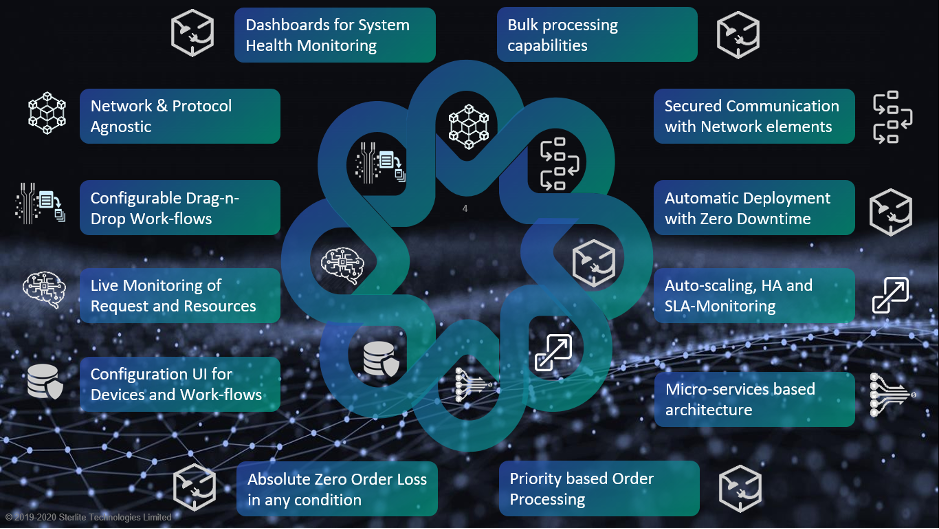
Designed with over 20 years of expertise in Telco’s B/OSS verticals and having a presence in 50+ global leading Telco players, dSP offers an excellent solution to the varied needs to service-provisioning using its network & protocol agnostic architecture, drag-n-drop workflow design and real-time analytics and reporting capability.
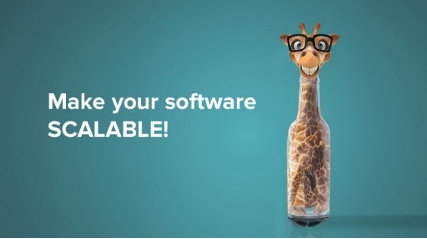
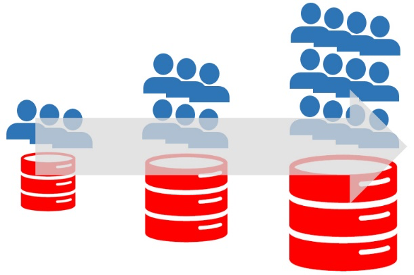
If the business is expecting 1M subscribers over the first year and 5M in the subsequent 3 years, then would you invest in hardware (storage/ CPU/ RAM) that is required for 5M from day one? No, I won’t.
Interestingly opposite, Telcos may get an exponential burst in network-traffic for a short period of time in cases like Rally for a US President in NY or Australian-Open for a week in Melbourne. So, what we actually need is an elastic network that grows when traffic increase and shrinks when normal/low traffic.
dSP’s cloud-native microservice based architecture comes to save us in this dilemma. Go live with minimal required configuration resulting in reduced Capex investment in initial years. dSP’s capability to dynamically add/remove application instances and resources (i.e. storage/ CPU/ RAM/ Nodes) when your business grows/shrink offers best-in-class returns on investments.
dSP’s unique feature to define Standard (based on CPU and Memory usage) or Custom scalability metrics (based on no. of orders waiting to be processed) guarantees to serve Telco’s dynamic performance needs.

In the world of 5G, OTT & IoT – Telco’s network is expected to serve over 1000s of records per minute within the boundaries of <100 milliseconds per transaction. That too with the assurance of each transaction monitoring, rollback and zero-data-loss!!
dSP’s performance-optimized components and niche message-driven architecture exceeds such a steep order-processing requirement and delivers the throughput of 100+ orders (i.e. 800+ transactions) per second.
That too with the guaranteed SLA assurance and persistence of every request and response for tracking, reporting and reprocessing capabilities.
Conclusion
dSP is a 5G compliant network-and-service agnostic service-provisioning software that offers a unique blend of scalability, configurability, performance, reporting, and live monitoring features.
dSP’s capability to add or remove new network devices without affecting live traffic gives an unprecedented advantage to Telco for upgrading EOL/ faulty devices. Just configure the dSP once and enjoy zero-order-loss, priory-order-processing and live monitoring with the dessert of auto-scaling & self-healing!
Reach out to us and get a future-proof provisioning solution deployed in your network.
Happy Provisioning!
P.S: For more details, please refer to our case-studies published on CNCF.io and Medium.com,
https://www.cncf.io/case-studies/stl/
https://medium.com/@safvan.kothawala/aspects-of-cloud-native-microservice-architecture-949be355bca9
FAQs
What is Cloud Computing?
Cloud computing is a paradigm that allows On-demand network access to shared computing resources. A model for managing, storing and processing data online via the internet. The three major characteristics of cloud computing are On-Demand Service, Network Access, and shared resources.
There are three major delivery models of cloud computing, namely Software as a Service (for end-users), Platform as a service (for developers), and Infrastructure as a service (for system administrators).
1) Software as a Service or SaaS is a new method of delivering software applications. Instead of accessing the software from local servers (a powerful computer system), it uses the internet to access the software applications. To be considered SaaS, the software needs to be delivered either through a web interface or a mobile application. E.g., Microsoft 365, Salesforce CRM, Google suite apps, etc.
2) Platform as a service or PaaS is made up of a programing language execution environment, an operating system, a web server, and a database. The service enables users to build, run and compile the programs without an underlying infrastructure. Apart from the data and application resources, everything else is managed by the service-providing vendor, e.g., AWS, Azure, Google App engine, etc.
3) Infrastructure as a service or IaaS is a service that offers computing architecture & infrastructure and computing resources like data storage, virtualization, servers & networking in a virtual environment so that multiple users can access them. Apart from Applications, Data, Runtime, and Middleware, everything else is managed by the service-providing vendor. For, e.g., Cisco Metacloud, Rackspace, Amazon EC2, etc.
Uses of Cloud Computing include: Developing cloud-native applications on the go; Secure, Efficient & Reliable storage capability; Audio and Video streaming; On-Demand Software, Platforms & Infrastructure; Online Test and Build ecosystem support; Data Analytics; Embedded Intelligence; Scalability & Speed.
What is WiFi?
“Put simply, WiFi is a technology that uses radio waves to create a wireless network through which devices like mobile phones, computers, printers, etc., connect to the internet. A wireless router is needed to establish a WiFi hotspot that people in its vicinity may use to access internet services. You’re sure to have encountered such a WiFi hotspot in houses, offices, restaurants, etc.
To get a little more technical, WiFi works by enabling a Wireless Local Area Network or WLAN that allows devices connected to it to exchange signals with the internet via a router. The frequencies of these signals are either 2.4 GHz or 5 GHz bandwidths. These frequencies are much higher than those transmitted to or by radios, mobile phones, and televisions since WiFi signals need to carry significantly higher amounts of data. The networking standards are variants of 802.11, of which there are several (802.11a, 802.11b, 801.11g, etc.).














